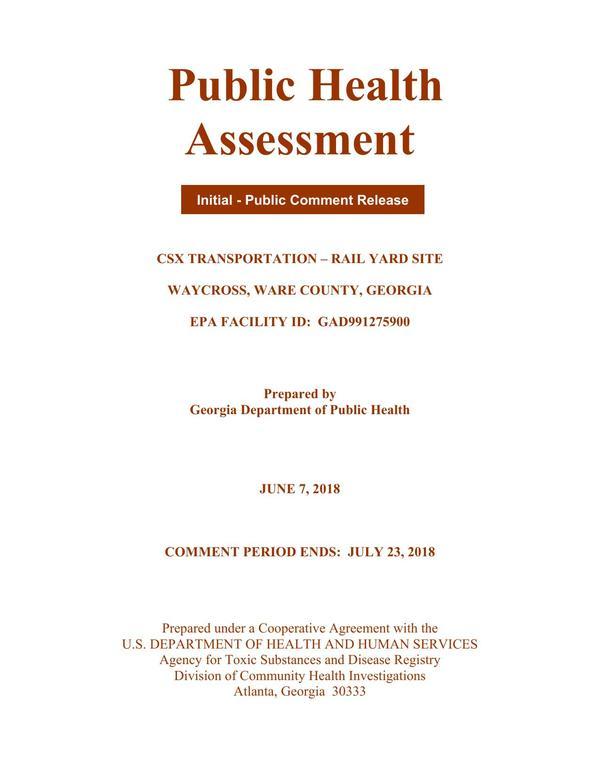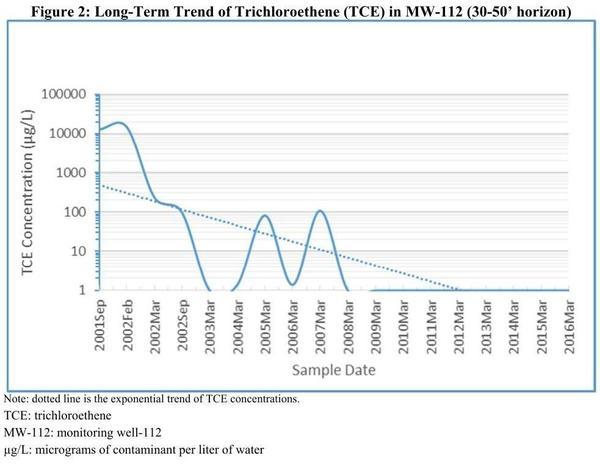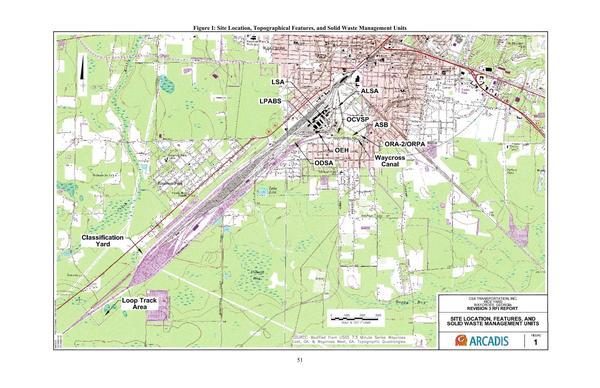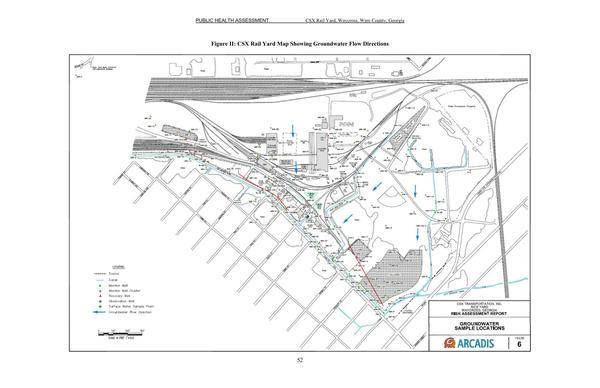The Georgia Department of Health published many positive downwards trends in contaminants, and some big “cannot conclude”s last summer, when it released through the U.S. Centers for Disease Control (CDC) a Public Health Assessment, CSX TRANSPORTATION — RAIL YARD SITE, WAYCROSS, WARE COUNTY, GEORGIA.
Most of the graphs show downward trends, like this one, of Trichloroethene (TCE), the substance whose detection seems to have kicked off all this work.
On page 39, the report says about data collected by Silent Disaster:
Report analyses do not indicate any illness trends. But much of the data do not contain essential information such as sex, age of disease onset, length of residency in the community, and formal diagnoses. All this information is necessary to determine possible elevated rates or numbers of cases of specific illness among residents in a specific geographic location.
However, on the next page, it also says:
5.2 Cancer Cluster Investigation
Cancer clusters are an occurrence of a greater than expected number of cases of cancer within a group of people, a defined geographic location, or a specific period. Cancer clusters can result from a variety of causes.
The report goes into some detail about what cancers have been reported and what studies have been done, including:
- The cancer cases listed in the investigation were spread throughout Ware and Pierce Counties. No geographic clustering was found.
The final conclusions in the report are two positive and two “cannot conclude”. Wading or playing in the area of the Waycross Canal is not “likely to harm the health of children or adults”.
2. DPH cannot conclude whether breathing contaminants in air near the CSX Rail Yard site in the past, currently, or in the future could harm people’s health.
3. DPH cannot conclude whether people were exposed to chemicals in the indoor air of homes in the past as a result of soil vapor intrusion because these data are not available. However, based on extensive groundwater sampling results and continuous remediation activities at the rail yard, DPH does not expect vapor intrusion to be a source of volatile organic compound (VOC) exposure at concentrations that would lead to adverse health effects in the neighborhood south of the CSX Rail Yard.
The most certain conclusion seems to be this one:
4. People in the Waycross community are not being exposed to CSX Rail Yard site-related contaminants in their drinking water, which is derived from municipal water obtained from the Floridan aquifer. Waycross requires a municipal well connection for all residential properties within the city limits.
Seems like there is further work to do outside the railyard, some of which is included in the Public Health Action Plan at the end, such as
6. Collaborate with EPD on air modeling in the area surrounding the CSX Rail Yard at EPD’s request.
DPH also promises to address public comments about this health assessment.
Thanks to the author of this report for the tip about its existence: Franklin Sanchez, REHS, Health Assessor, Chemical Hazards Program, Georgia Department of Public Health.
-jsq, John S. Quarterman, Suwannee RIVERKEEPER®
You can join this fun and work by becoming a WWALS member today!
Short Link:




